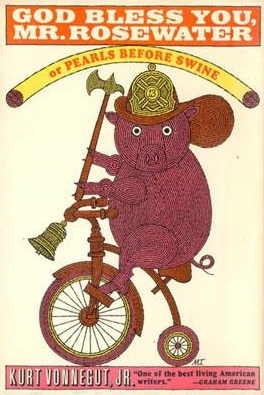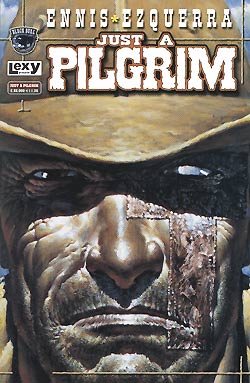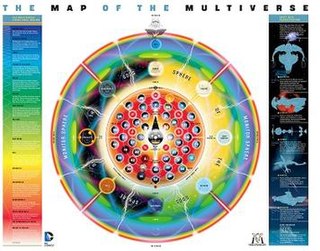Related Research Articles

Kurt Vonnegut was an American writer and humorist known for his satirical and darkly humorous novels. In a career spanning over 50 years, he published fourteen novels, three short-story collections, five plays, and five nonfiction works; further collections have been published after his death.
The world line of an object is the path that an object traces in 4-dimensional spacetime. It is an important concept of modern physics, and particularly theoretical physics.

Slaughterhouse-Five, or, The Children's Crusade: A Duty-Dance with Death is a 1969 semi-autobiographic science fiction-infused anti-war novel by Kurt Vonnegut. It follows the life and experiences of Billy Pilgrim, from his early years, to his time as an American soldier and chaplain's assistant during World War II, to the post-war years, with Billy occasionally traveling through time. The text centers on Billy's capture by the German Army and his survival of the Allied firebombing of Dresden as a prisoner of war, an experience which Vonnegut himself lived through as an American serviceman. The work has been called an example of "unmatched moral clarity" and "one of the most enduring anti-war novels of all time".

The DC Universe (DCU) is the shared universe in which most stories in American comic book titles published by DC Comics take place. In context, the term "DC Universe" usually refers to the main DC continuity. It contains such well-known superheroes as Superman, Batman, Wonder Woman, the Flash, Aquaman, Green Lantern, Green Arrow, Captain Marvel, Martian Manhunter, and Cyborg; as well as teams such as the Justice League, the Justice Society of America, the Suicide Squad, Doom Patrol, and the Teen Titans. It also contains well-known supervillains, including Lex Luthor, the Joker, the Cheetah, the Reverse-Flash, Black Manta, Sinestro, Deathstroke, Black Adam, Brainiac, and Darkseid.

Breakfast of Champions, or Goodbye Blue Monday is a 1973 novel by the American author Kurt Vonnegut. His seventh novel, it is set predominantly in the fictional town of Midland City, Ohio, and focuses on two characters: Dwayne Hoover, a Midland resident, Pontiac dealer and affluent figure in the city, and Kilgore Trout, a widely published but mostly unknown science fiction author. Breakfast of Champions deals with themes of free will, suicide, and race relations, among others. The novel is full of drawings by the author, substituting descriptive language with depictions requiring no translation.

The Sirens of Titan is a comic science fiction novel by Kurt Vonnegut Jr., first published in 1959. His second novel, it involves issues of free will, omniscience, and the overall purpose of human history. Much of the story revolves around a Martian invasion of Earth.

God Bless You, Mr. Rosewater, or Pearls Before Swine, Kurt Vonnegut's fifth novel, was published in 1965 by Holt, Rinehart and Winston and as a Dell mass-market paperback in 1970. A piece of postmodern satire, it gave context to Vonnegut's following novel, Slaughterhouse-Five and shared in its success.
Kilgore Trout is a fictional character created by author Kurt Vonnegut. Trout is a notably unsuccessful author of paperback science fiction novels.
Ilium is a fictional town in eastern New York state, used as a setting for many of Kurt Vonnegut's novels and stories, including Player Piano, Cat's Cradle, Slaughterhouse-Five, and the stories "Deer in the Works", "Poor Little Rich Town", and "Ed Luby's Key Club". The town is dominated by its major industry leader, the Ilium Works, which produces scientific marvels to assist, or possibly harm, human life. The Ilium Works is Vonnegut's symbol for the "impersonal corporate giant" with the power to alter humankind's destiny. The town has been compared to Zenith, the fictional setting in Sinclair Lewis's 1922 novel Babbitt.

Rassilon is a fictional character in the British science fiction television series Doctor Who. In the backstory of the programme, he was the founder of Time Lord society on the planet Gallifrey and its first leader, as Lord High President. After the original television series ended in 1989, Rassilon's character and history were developed in books and other media.
Eliot Rosewater is a recurring character in the novels of American author Kurt Vonnegut. He appears throughout various novels as an alcoholic, and a philanthropist who claims to be a volunteer fireman. He runs the Rosewater Foundation, an organization created to keep the family's money in the family. He is among the few fans of the novels of Kilgore Trout.
Reverse chronology is a narrative structure and method of storytelling whereby the plot is revealed in reverse order.

Slaughterhouse-Five is a 1972 American comedy-drama military science fiction film directed by George Roy Hill and produced by Paul Monash, from a screenplay by Stephen Geller, based on the 1969 novel of the same name by Kurt Vonnegut. The film stars Michael Sacks as Billy Pilgrim, who is "unstuck in time" and has no control over where he is going next. It also stars Ron Leibman as Paul Lazzaro and Valerie Perrine as Montana Wildhack.

Just a Pilgrim is a five-issue comic book limited series written by Garth Ennis, with art by Carlos Ezquerra, and published by Black Bull, the short-lived comics publishing division of Wizard Entertainment, in 2001. It was followed by a 4 issue sequel entitled Just a Pilgrim: Garden of Eden in 2002.

Orphans of Chaos is a 2005 science fantasy novel by John C. Wright. It is the first volume of the Orphans of Chaos trilogy that continues with the novels Fugitives of Chaos (2006) and Titans of Chaos (2007).

The Venom Trees of Sunga is a science fiction novel by American writer L. Sprague de Camp, the twelfth book in his Viagens Interplanetarias series and the second in its subseries of stories set on the fictional planet Kukulkan. It was first published in paperback by Del Rey Books in November 1992. An E-book edition was published by Gollancz's SF Gateway imprint on September 29, 2011 as part of a general release of de Camp's works in electronic form.

In DC Comics, the Multiverse is a "cosmic construct" composed of the many fictional universes the stories of DC take place in. The worlds in this multiverse share a space and fate in common, and its structure has changed several times in the history of DC Comics.

Hans-Jürgen von Bose is a German composer.
The idea of a fourth dimension has been a factor in the evolution of modern art, but use of concepts relating to higher dimensions has been little discussed by academics in the literary world. From the late 19th century onwards, many writers began to make use of possibilities opened up by the exploration of such concepts as hypercube geometry. While many writers took the fourth dimension to be one of time, others preferred to think of it in spatial terms, and some associated the new mathematics with wider changes in modern culture.
References
- ↑ Slaughterhouse Five, p. 26